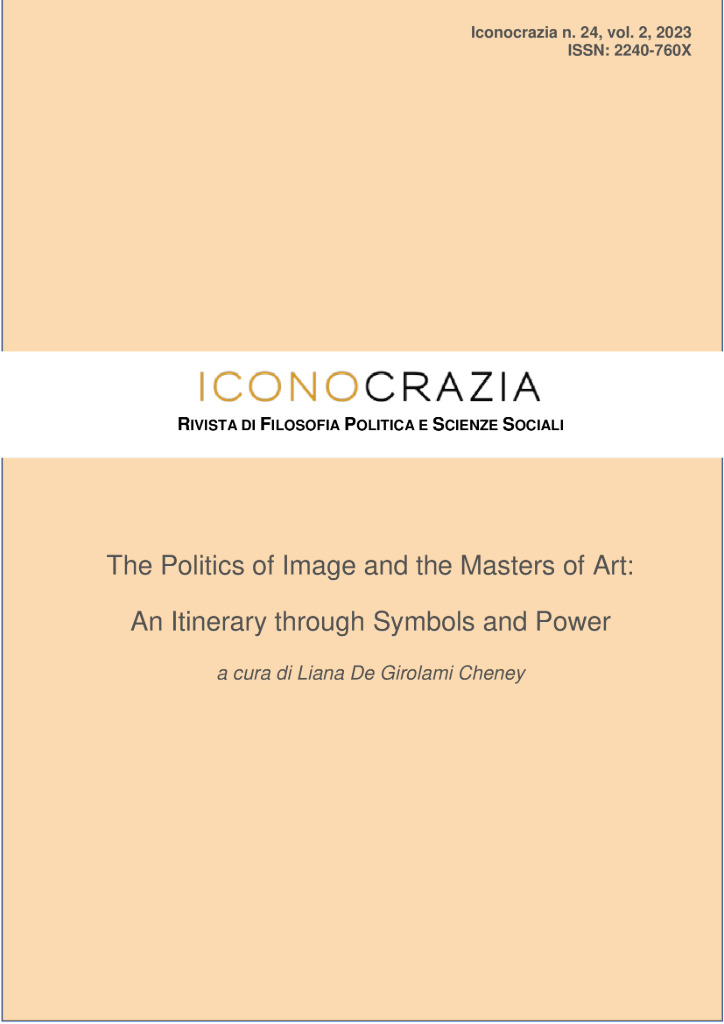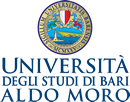Josefa de Óbidos’s Holy Family and Sacrificial Lamb: Emblematic Devotions
DOI:
https://doi.org/10.15162/2240-760X/1863Parole chiave:
Agnus Dei, Holy Family, flora and fauna, cartouche, emblems, Christian symbolism, Baroque PortugueseAbstract
Josefa Figueira de Ayala Cabrera de Óbidos (1630–1684) was an outstanding Portuguese Baroque painter. She was renowned for her talent and creativity, making her one of the most notable female artists of her time. Her artwork covered both secular and sacred subjects, and she employed various mediums with versatility. Despite having different surnames, she signed her paintings under Josepha em Óbidos. This study delves into her religious art, focusing on her life and career, and analyses two religious paintings, the Lisbon Holy Family and the Baltimore Agnus Dei. Josefa skilfully integrated the spiritual reforms of the Counter-Reformation with the Baroque style in both paintings, emphasising the physical and spiritual aspects of nature. Her paintings were visually appealing, with pleasing colours and intricate detailing. Her use of emblematic and mystical symbolism added to their spiritual significance, resulting in devotional paintings that profoundly affected viewers.Riferimenti bibliografici
Andrade, I. (2015). Josefa de Óbidos e a invenção do Barroco português. Exhibition Catalog. Lisbon: Nacional-Casa da Moeda Museu Nacional de Arte Antiga.
Andrews, J. (2020). “Josefa de Ayala e Cabrera’s St. Catherine of Alexandria Altarpiece and Female Empowerment.” In J. Roe and J.
Andrews (eds.), Representing Women’s Political Identity in the Early Modern Iberian World. Milton Park, UK: Routledge, chap. 5, https://doi.org/10.4324/9781351010122.
Azambuja, S. T. (2009/2017). A Linguagem Simbólica da Natureza. A Flora e Fauna na Pintura Seiscentista Portuguesa. Lisbon: Nova Vega, repr. Lisbon: Scribe.
Barker, S. (2022). Artemisia Gentileschi. London: Lund Humphries.
Bleichmar, D. (2008). “Looking at Exotica in Baroque Collections: The Object, the Viewer, and the Collection as a Space.” In M. Rey-Bueno and M. López-Pérez (eds.), The Gentleman, the Virtuoso, the Inquirer: Vincencio Juan de Lastanosa and the Art of Collecting in Early Modern Spain. Cambridge, UK: Cambridge Scholars Publishing.
Boland, J. (1640). Imago primi saeculi Societatis Iesu. Antwerp: Plantin.
Bosch, L. M. F. (2020). Mannerism, Spirituality, and Cognition: The Art of Enargeia. London: Routledge.
Brockey, L. M. (2014). The Visitor: André Palmeiro and the Jesuits in Asia. Cambridge, MA: Harvard University Press.
Brown, J. (1991). Zurbarán. New York: Harry N. Abrams.
Chilton, B. (1992). The Temple of Jesus: His Sacrificial Program with a Cultural History of Sacrifice. University Park: Penn State University Press.
da Costa, L. X. (1931). Uma Aguafortista do Século XVII (Josefa Ayala). Coimbra: Imprensa da Universidade.
Dabbs, J. K. (2009). Life Stories of Women Artists, 1550–1800: An Anthology. London: Routledge.
De Barreira, Fray Isidoro (1622/1698). Tratado das significaçoens das plantas, flores, e fruttos, que se refrem na Sagrada Escrittura: tradas de divina e humans letras, com suas breves consideraçoes. Lisbon: Pedro Craesbeeck; repr. Lisbon: Officina de Manuel Lopes Ferreira.
De Girolami Cheney, L. (2000). “The Emblematic Self-Portraits of Josefa de Ayala D’Óbidos.” Mediterranean Studies, 9, pp. 203–229.
Ead. (2020). Lavinia Fontana’s Mythological Paintings: Art, Beauty, and Wisdom. Cambridge, UK: Cambridge Scholars Publishing.
Ead. (2023a). Barbara Longhi of Ravenna: Art, Grace, and Piety (Cambridge, UK: Cambridge Scholars Publishing.
Ead. (2023b). “Josefa de Óbidos’s Vedute: Discovering the Realms of Nature.” Journal of Literature and Art Studies, 13, no. 7 (July), pp. 161–186.
de Froes Perym, Damiao de Froes, aka Fray Joao de San Pedro. (1736–1740). Theatro heroino: Abecedario historico, e catalogo das mulheres illustres em armas, letras, acçcoens heroicas e artes libera (Theatre of Heroines: Historical primer and catalog of Illustrious Women in Arms, Letters, Heroic Actions and the Liberal Arts). 2 vols. Lisbon: na.
Delenda O., and A. Ros de Barbero. (2009–2010). Francesco Zurbarán. 2 vols. New York: Wildenstein Institute and Fundación de Apoyo a la Historia del Arte Hispánico.
Edgerton, S. Y. (2006). “Brunelleschi’s mirror, Alberti’s window, and Galileo’s ‘perspective tube.’” História, Ciências, Saúde—Manguinhos, 13, pp. 151–179,
https://doi.org/10.1590/S0104–59702006000500010.
Estrela, J., S. Gorjao, and V. Serrão (eds.). (2005). Exhibition Catalogue on Baltazar Gómes Figueira (1604–1674). Pintor de Óbidos. Penamaior: Ares Gráficas, Lda.
García Arranz, J. J. (2006). “El Papagayo y la Serpiente: Historia Natural de una Empresa de Diego Saavedra Fajardo.” Norba: Revista de arte, 26, pp. 33–41.
Impey, O., and A. MacGregor (eds.). (2001). The Origins of Museums: The Cabinet of Curiosities in Sixteenth- and Seventeenth-Century Europe. Chicago: House of Status.
Inventário Artístico de Portugal, Distrito de Santarém (1949). Lisbon, ANBA.
Kemp, M. (1990). The Science of Art: Optical Themes in Western Art from Brunelleschi to Seurat. London: Yale University Press.
Levi D’Ancona, M. (1977). The Garden of the Renaissance: Botanical Symbolism in Italian Painting. Florence: L. S. Olschki.
Marques de Gama, L. F. (1986a). Arquitectura e Urbanismo, Sec. XVI e XVII. Óbidos: Câmara Municipal de Óbidos.
Marques de Gama, L. F. (1986b). O Testamento Inédito da Pintora Josefa D’Óbidos. Óbidos: Câmara Municipal de Óbidos.
Möbius, H. (1982). Women of the Baroque Age. Montclair, NJ: Abner Schram.
Modesti, A. (2015). Elisabetta Sirani ‘Virtuosa’: Women’s Cultural Production in Early Modern Bologna. Ghent: Brepols.
Norman, L. F. (2001). The Theatrical Baroque: European Plays, Painting, and Poetry, 1575–1725. Chicago: Smart Museum of Art.
O’Malley, J. (2002). Trent and All That: Renaming Catholicism in the Early Modern Era. Cambridge, MA: Harvard University Press.
O’Malley, J. (2012). “Trent, Sacred Images, and Catholics’ Senses of the Sensuous.” In M. Hall (ed.), The Sensuous in the Counter-
Reformation Church. Cambridge, UK: Cambridge University Press, pp. 28–42.
Olivera Caetano, J. (2019). Reading the Fate of the Christ Child. Buenos Aires: Jaime Eguiguren Antiques.
Pigozzi, M. (ed.). (2015). Il Concilio di Trento e le arti 1563–2013. Bologna: Bononia University Press.
Pinillos, M. C. (ed.). (1996). Calderón de la Barca, El Cordero De Isaía. Pamplona: Universidad de Navarra.
Prodi, P. (1967). Il cardinale Gabriele Paleotti (1522–1597). Rome: Edizioni di Storia e Letteratura.
Prodi, P. (2014). Arte e pietà nella Chiesa Tridentina. Bologna: Il Mulino, 2014.
Reynolds, R. E. (2000). “The Drama of Medieval Liturgical Processions.” Revue de Musicologie, 86, no. 1, pp. 127–142.
Ripa, C. (1603). Iconologia. Rome: L. Facii.
Ross, A. C. (1994). A Vision Betrayed: The Jesuits in Japan and China, 1542–1742. Maryknoll, NY: Orbis Books.
Saavedra Fajardo, D. (1655, 3rd ed.). Idea de un príncipe político cristiano representada en cien empresas. Valencia: Gerónimo Vilagrasa. First published Munich: Nicolao Enrico, 1640; 2nd ed. Milan: Nicolao Enrico, 1642. See https://www.studiolum.com/en/cd01-saavedra.htm for a history of editions.
Schiller G. (1972). The Iconography of Christian Art. 2 vols. Greenwich, CT: New York Graphic Society, Ltd.
Schroeder, H. J. (ed. and trans.). (1978). Canons and Decrees of the Council of Trent. Rockford, IL: Tan Books.
Serrão, V. (1993). Josefa de Óbidos: e o tempo Barroco. Lisbon: Instituto Portugués do Património Cultural.
Serrão, V., B. von Barghahn, and L. de Moura Sobral. (1997a). Josefa de Óbidos. Washington, DC: National Museum of Women in the Arts.
Ead. (1997b). The Sacred and the Profane: Josefa de Óbidos of Portugal. Lisbon: Gabinete de Relações Internacionais.
Shlain, L. (1991). Arts and Physics: Parallel Visions in Space, Time and Light. New York: Morrow.
Sullivan, J. E. (1978). “Josefa de Ayala. A Woman Painter of the Portuguese Baroque.” Journal of the Walters Art Gallery, 37, pp. 22–35.
Id. (1981). “Obras de Josefa de Ayala, pintura ibérica.” Archivo Español de Arte Madrid, 54, no. 213, pp. 87–93.
Tiffany, T. J. (2012). Diego Velázquez’s Early Paintings and the Culture of Seventeenth-Century Seville. University Park: Penn State University Press.
Wade, M. R. (n.d.). “What is an Emblem?” http://emblematica.grainger.illinois.edu/help/what-emblem#:~:text=Mara%20R.,in%20compact%20and%20compelling%







